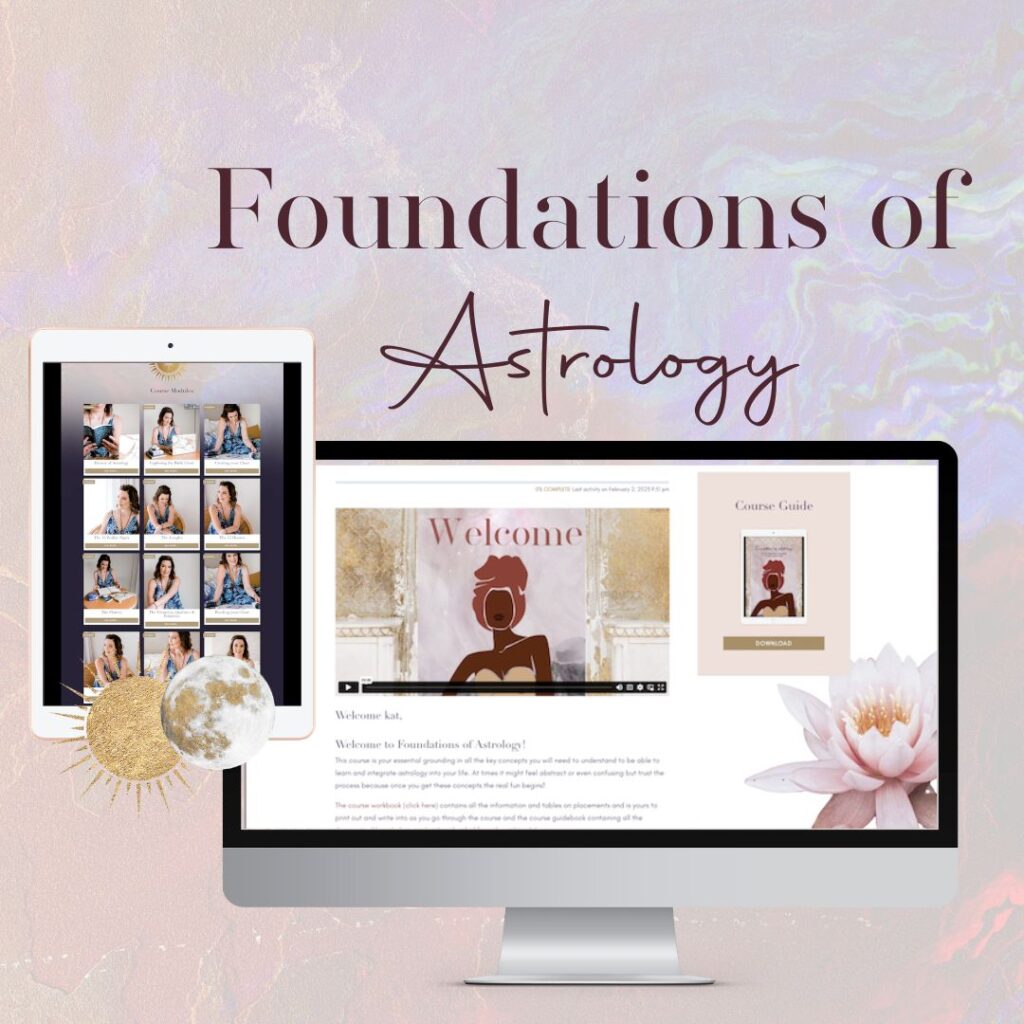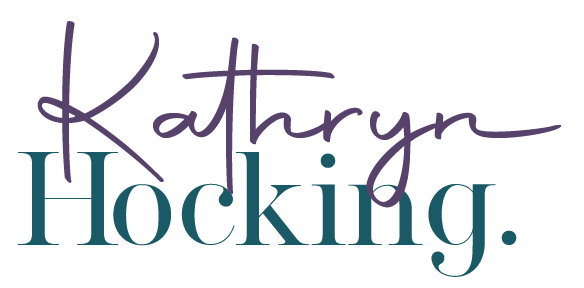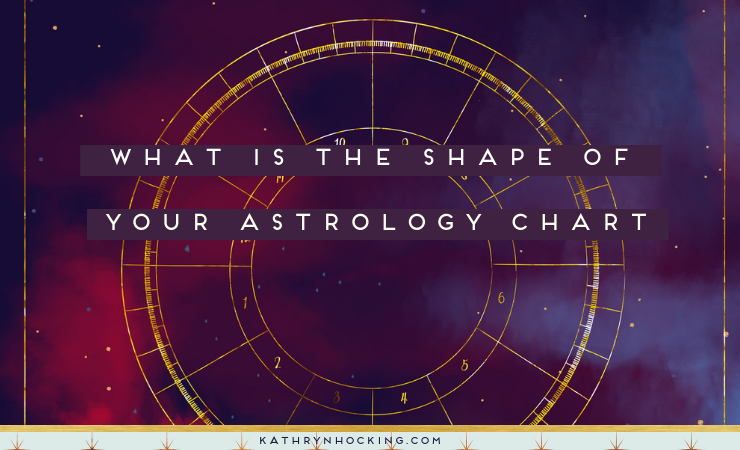
Astrologer Marc Edmund Jones identified seven major astrology chart shapes, and what each astrology chart shape means. If you want to read about the astrology chart shapes in detail try to find the book by Marc Edmund Jones: The Guide to Horoscope Interpretation (Quest Book).
Whip out your natal chart and see what your dispersion of planets has to say about you!
Bundle Chart Shape
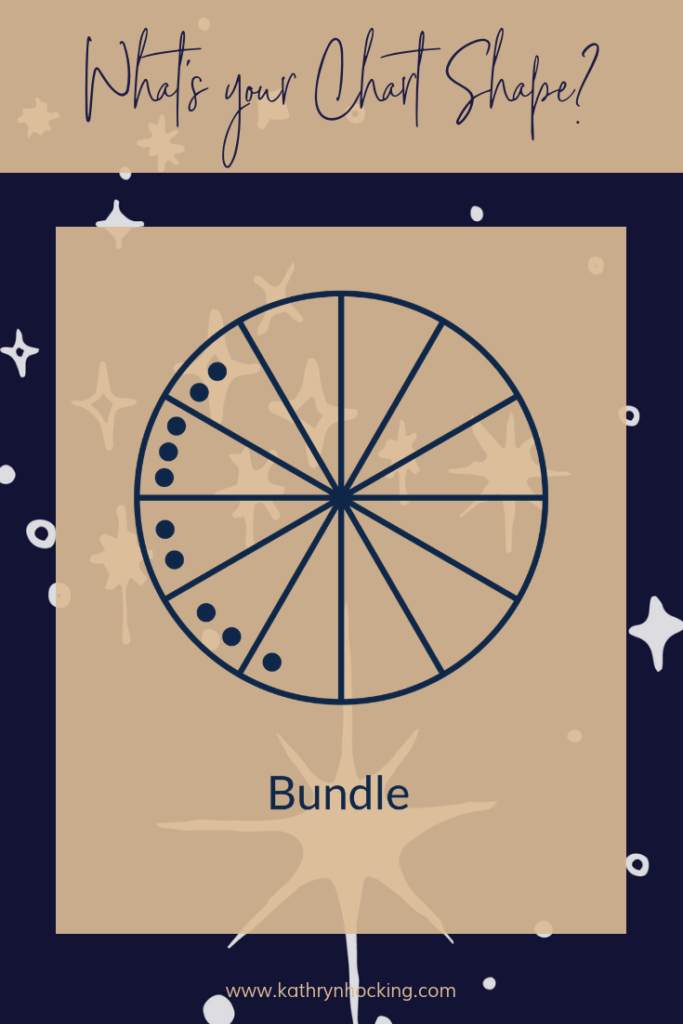
In this astrology chart shape, all of the planets appear within the span of 120° or 4 signs of the zodiac. Normally a bundle would appear in four or fewer adjacent signs or houses.
This formation can give the individual an amazing focus in life, and mean that they can accomplish much in the areas of focus in their chart (e.g the houses)
A downside of this concentration of planets can be a lack of widespread interests or balanced view of life. This chart shape can indicate careers or businesses that require deep concentration, persistence and commitment, or to specialise in one area of expertise.
Is your chart the bundle shape? Which signs and houses? and if so does this description resonate with you?
Locomotive Chart Shape
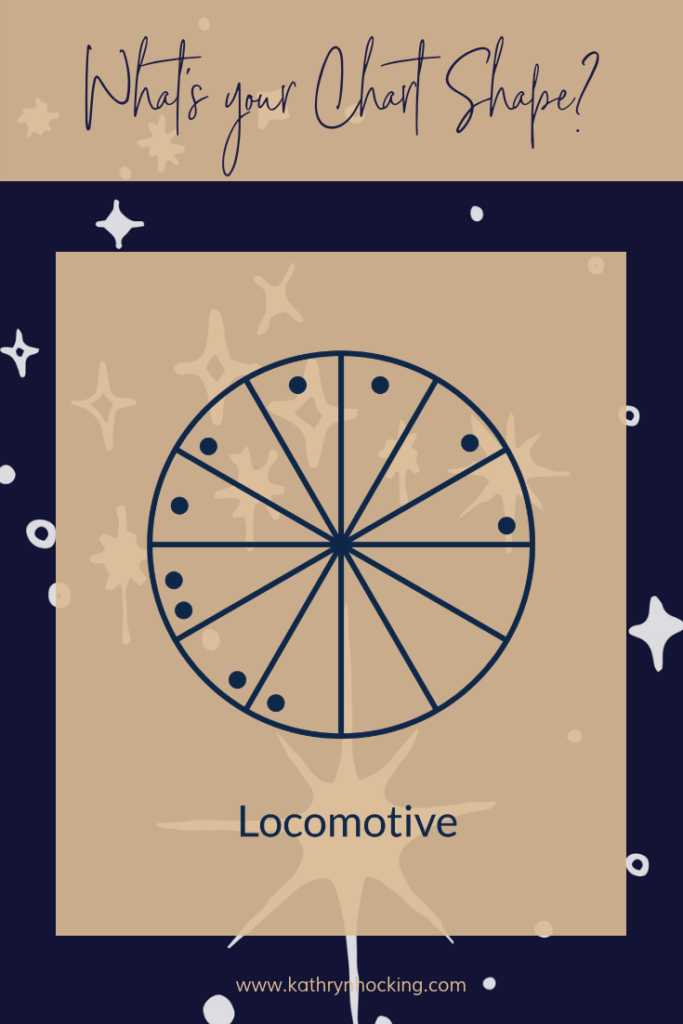
This pattern is produced when all the planets are contained within 240°; normally including eight continuous signs or houses (although an empty sign or house is allowed.) so that a whole 120 degrees is completely unoccupied.
The planet that follows clockwise (in this case the planet in the third house) the empty space will have a big impact on the person. This planet is like the ‘locomotive’ of the natal chart, powering up the individual to achieve goals with an incredible drive and wealth of energy at their disposal.
The individual is typically driven to overcome the perceived “lack” as indicated by the empty signs and houses.
Is your chart the locomotive shape? Which signs and houses are devoid of planets? Does this description resonate with you?
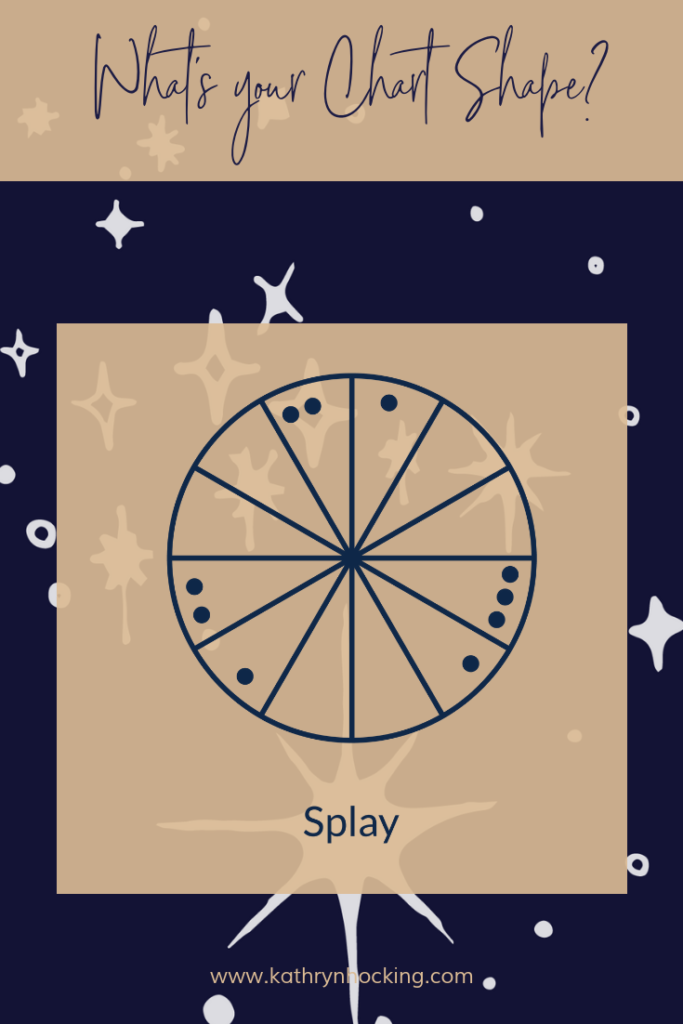
Splay Chart Shape
This chart shape has at least two, but usually, three pairs (or conjunctions) of planets randomly distributed in a ‘splay’ shape around the chart. A Splay must have three separate segments with at least one empty sign between them. A grand trine (major aspect pattern) is also very characteristic of the Splay.A person with this pattern will have several areas of strength and therefore a vast reserve of talent and potential that needs focus to be developed into tangible skills. The issue can be that there is a lack of relevance between the different skill sets, so that the person may not derive the full benefit from them. Multi-passionates check your charts!Is your chart the splay shape? Which signs and houses have the triad of focus? Does this description resonate with you?

Bowl Chart Shape
In the bowl shape, all planets are located across one half of the horoscope, i.e. within 180° or six signs of the zodiac.
A person with a bowl-shaped chart pattern will likely be highly focused and self-contained.
The individual will go in search of work that is meaningful, and personally relevant based on the houses that the planets are focused in.
This chart shape brings a challenge to become mindful of and integrate the qualities of the opposing hemisphere.
Is your chart the bowl shape? Which hemisphere (left or right) has the focus? Does this description resonate with you?
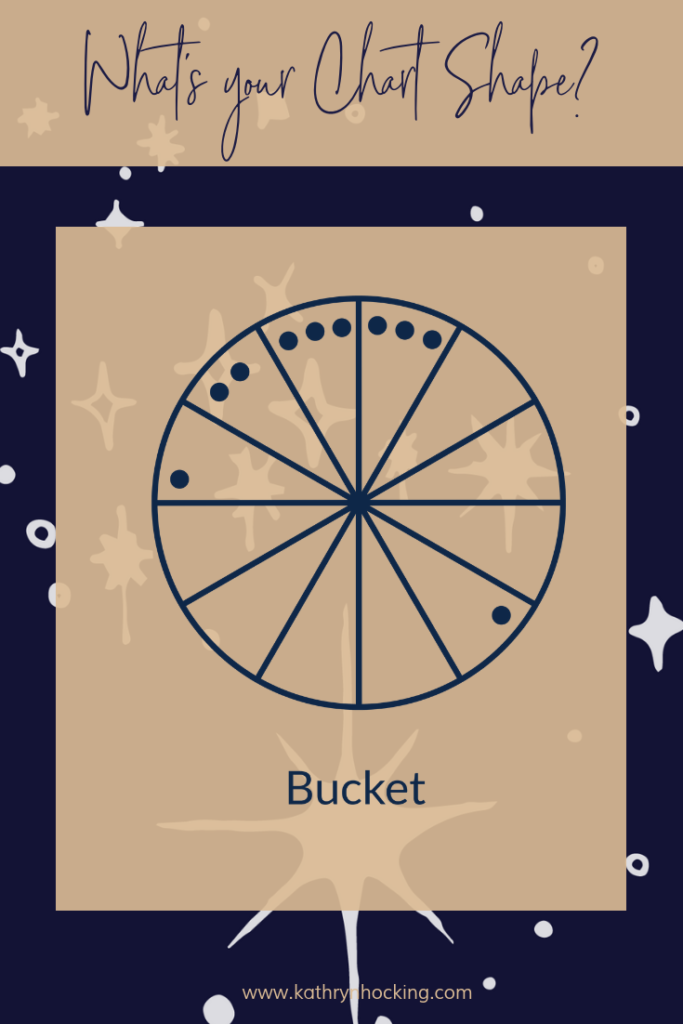
Bucket Chart Shape
This chart shape is similar to the bowl shape, except that one planet opposes the planets that are close together. The singleton planet is called the ʹhandleʹ of the bucket and tends to be an emphasised life theme and a very strong even dominant planet.
Someone with this chart shape often directs their efforts towards one single purpose and is single-minded in its pursuit.
The singleton planet at the handle of the bucket likely will be more important in the personʹs life than all the other planets. The challenge for this person is to channel the energy wisely.
Is your chart the bucket shape? What is your singleton planet and how does it dominate in your life? Does this description resonate with you?
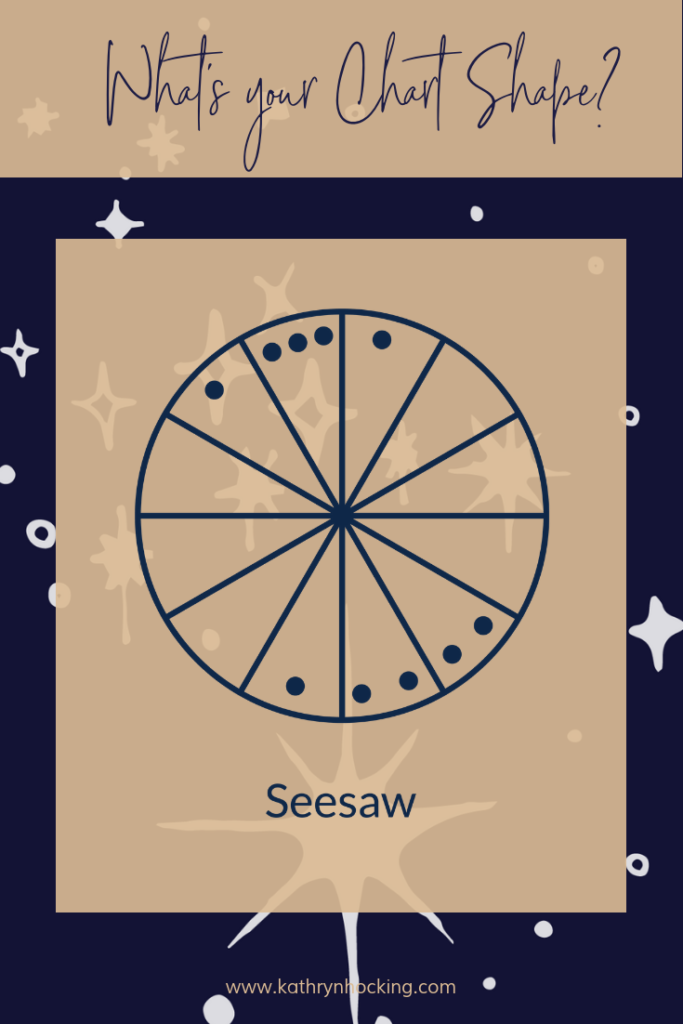
Seesaw Chart Shape
The Seesaw chart shape is an aspect pattern with planets grouped together in two opposite clusters, and where the two sections of the chart on either side of these clusters are empty of planets and at least 60° or two signs wide.
Someone with this chart shape may tend to seesaw with their life following a pattern of two distinctly contrasting alternatives.
There can be an enormous amount of instability between the two clusters with so many opposition angles in the chart. If you have this shape you may find it difficult to integrate these two sharply different parts of your life, which are often in competition with each other.
Is your chart the Seesaw shape? Does this description resonate with you? How do you manage the opposing energies?
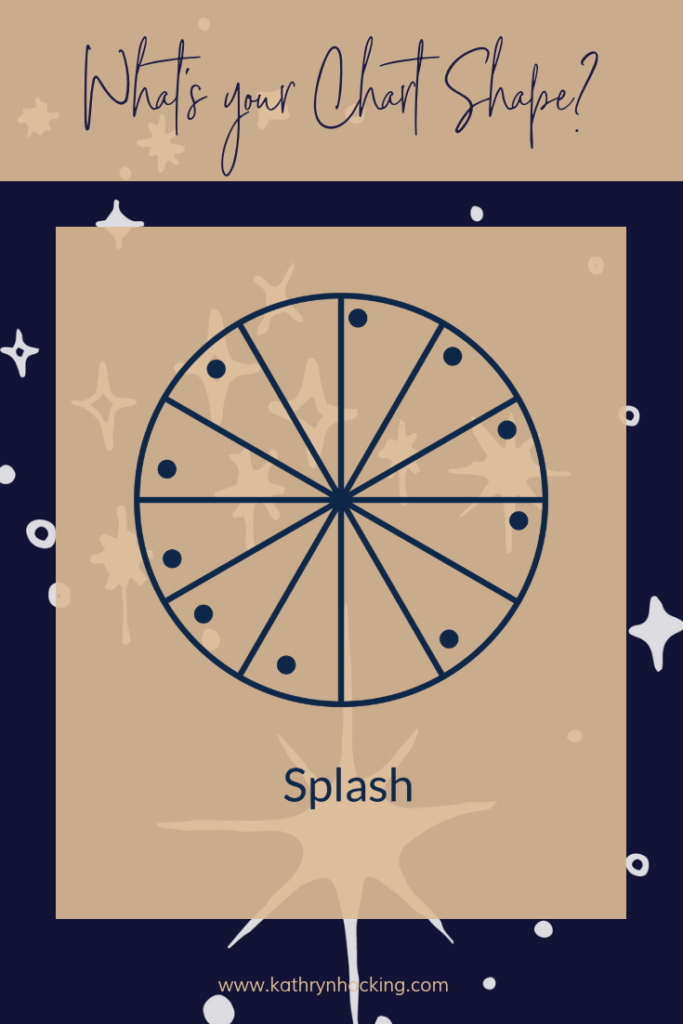
Splash Chart Shape
As its name suggests this pattern, or rather lack of pattern, occurs when the planets are randomly distributed around the chart. A true splash pattern should have at least seven signs or houses with planets in them with no major stellia (clusters of planets).
A person with this pattern has a diverse nature and loves variety.
However, as with the splay pattern, there is a danger of the person scattering their energy unproductively and lacking focus.
Is your chart the Splash shape? Does this description resonate with you? How do you manage the diverse energies and focus?
So what’s the shape of your astrology chart?
Take a look at the different chart shapes and see if you can recognise the shape of your chart!
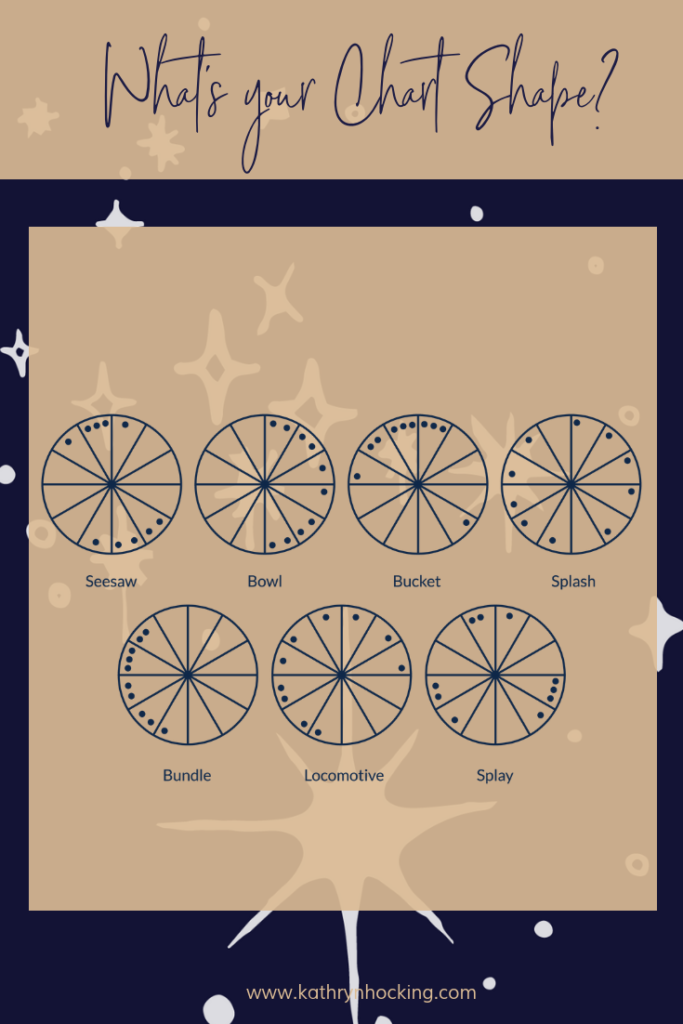
Want to learn more about your chart?
Check out my foundations of astrology e-Course and get started straight away!
